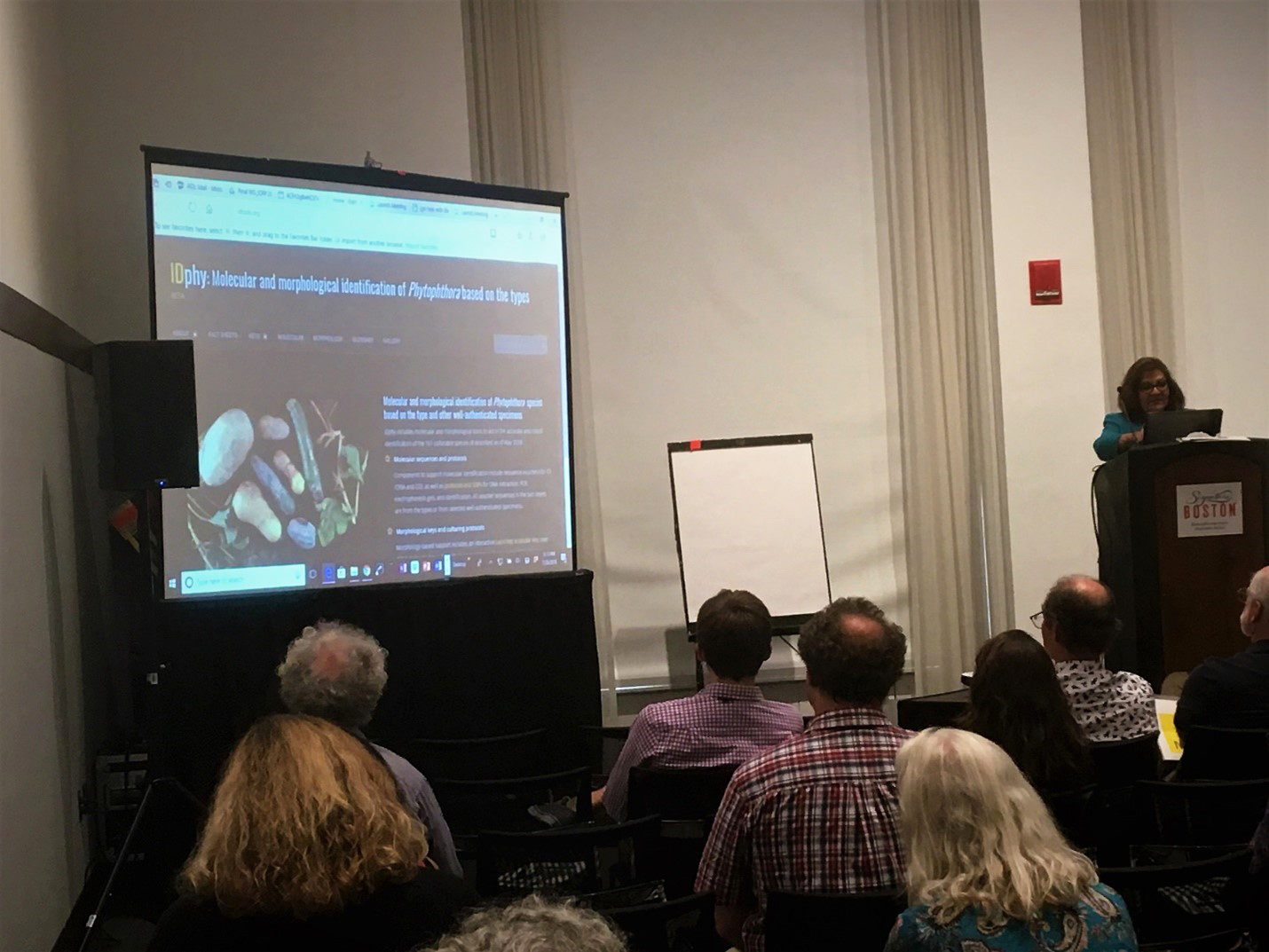Known as the “plant destroyer,” the genus Phytophthora is considered one of the most important groups of plant pathogens—causing significant economic and environmental losses throughout history and into today. There are over 200 identified species in the Phytophthora genus. These pathogens, and those yet to be identified, can spread quickly due to the increasing rate of global trade, e-commerce, and travel. Rapid identification is therefore critical for effective plant disease management.
While several international online resources for Phytophthora identification currently exist, in some instances they contain incorrect sequences submitted to the National Center of Biotechnology Information (NCBI), which is open to the public with no vetting process. These incorrect NCBI sequences have been filtered into the Phytophthora online resources, perpetuated, and multiplied over the years. Dr. Z. Gloria Abad and other members of the U.S. Department of Agriculture’s Animal and Plant Health Inspection Service’s (APHIS) Plant Pathogen Confirmatory Diagnostics Laboratory and Pest Identification Technology Laboratory have collaborated with relevant experts for nearly a decade to develop an alternate, robust identification tool that avoids the pitfalls of its counterparts. Abad and colleagues shared this innovative online tool, called “IDphy,” in the journal Plant Disease for the correct and timely identification of Phytophthora species.
IDphy is the first online tool for molecular and morphological identification that uses the data of the ex-type cultures, which are the duplicates of the original type specimen (mostly a single dry culture deposited in a single herbarium collection) for identifying plant pathogens. This increases its reliability and accuracy compared to other resources that rely on photographs, sequences, or descriptions alone. The online tool covers all described species with primary focus on those that cause diseases of economic and environmental impact. Additionally, IDphy includes an interactive Lucid key and a tabular key; factsheets with information on structural and molecular features of each species; information on new species and hybrid descriptions, as well as the status of specimens and availability of whole genome sequences of the ex-types; a mobile app (free for Android and iOS); and a computer-based model and phylogenetic sequence analysis with seven genes.
These features, which will be regularly updated, make IDphy a comprehensive, “one-stop shop” for the accurate identification of Phytophthora species. “The ability to accurately identify plant pathogens is critical for research on the biology and ecology of these organisms aimed at developing strategies for managing plant diseases,” Abad explains. “By providing access to a large database of information on Phytophthora species, including molecular and morphological features, IDphy can help researchers quickly and accurately identify the species they are working with. This, in turn, can help accelerate research by reducing the time and effort needed for accurate identification.” The tool will also be a huge asset to diagnostic labs identifying Phytophthora species of regulatory concern, which is an essential first step to reducing their impact on agriculture and the environment, says Abad.
The development of IDphy can significantly impact the diagnostics and management of plant diseases in agriculture and natural ecosystems, hopefully inspiring researchers worldwide to develop similar resources for other plant pathogens.
For more information on this free ID tool, read IDphy: An International Online Resource for Molecular and Morphological Identification of Phytophthora, published in Vol. 107, No. 4 / April 2023 of Plant Disease.
Learn more about this work on social media
USDA APHIS Twitter and LinkedIn: @USDA_APHIS and USDA Animal and Plant Health Inspection Service
USDA APHIS Facebook: USDA Animal and Plant Health Inspection Service
Department of Entomology and Plant Pathology, North Carolina State University Twitter: @NCSU_DEPP
Phytophthora Science and Management Facebook: The Centre for Phytophthora Science and Management
Follow us on Twitter @PlantDiseaseJ and visit https://apsjournals.apsnet.org/journal/pdis to learn more.

Dr. Gloria Abad presenting the progress of work for "IDphy" in collaboration with national and international scientists at the 6th International Oomycetes Workshop that she organized with members of the International Society of Plant Pathology SMC Oomycetes satellite meeting at the International Congress of Plant Pathology 2018, Boston, USA
Media Contact
Kyleen Russell
krussell@scisoc.org
651-994-3832
